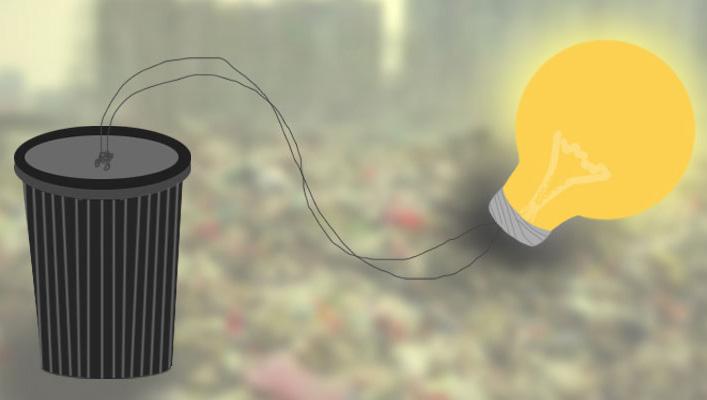
18 minute read
Australian waste-to-energy aim, ready, fire lament
Circular economy strategies
In a recent report, The Role of Energy from Waste in a Circular Economy: Creating a stable project structure, the Australian Industrial Ecology Network (AIEN) says that the implementation of Energy from Waste (EfW) in Australia should be streamlined in accordance with a nationally developed policy framework.
Advertisement
“What we find difficult to accept is that, in spite the myriad issues currently surrounding the management of waste and resource recovery in this country, our regulators still cannot approach this potentially ‘brand new to Australia’ industry with a view towards a standard Australia-wide approach,” says Chair of the AIEN, Colin Barker.
Within the concept of a circular economy, the AIEN says that it recognises the need for recovery of materials prior to assessing opportunities for EfW technologies, with already well-established and emerging processes and supply chains available for the recycling/ reuse of mixed plastics, rubber, glass, timber and aggregates – among others – as valuable resources in higher value-added product markets.
“The AIEN endorses the Ditch the “Fire-Ready-Aim” mentality and find a unified voice for Energy from Waste
concept of Highest Net Resource Value (HNRV) as worthy of detailed consideration and promotion. It is a concept enshrined within the waste hierarchy, but with a more tangible and measurable output,” commented Barker.
HNRV reflects an approach that seeks to achieve or retain the highest possible resource value from the materials under consideration, ‘net’ of the cost and effort to achieve such an outcome. The waste hierarchy is normally presented only in the context of environmental/social good. The AIEN, however, has re-imagined the waste hierarchy as representing the notional value applied to a given ‘resource’.
“Any failure to properly consider the importance of the waste hierarchy and HNRV principles may result in losses in the long term through stranded investment.
“When resource or material availability becomes a constraint, resources will always flow to those who can afford to pay the most for them,” Barker added. In its report, the AIEN sets out a number of recommendations in relation to the requisite ‘five pillars’ for success for an EfW project: • Host/Facility/Site • Resources/Feedstock • Technology • Off-Take Agreements • Funding “Failure to ensure that appropriately developed and defined strategies are established for each of these pillars, during – and for each sequential stage of the multi-stage project development process – could be catastrophic for any project, running the risk of effects from the commonplace phenomenon often described by the proverbial Fire-Ready-Aim,” concludes Barker.
To download the report The Role of Energy from Waste in a Circular Economy: Creating a stable project structure click here.





With your support we can continue to provide practical help, care and comfort.
Accommodation and home visits are just two of the ways we support New Zealanders affected by cancer.
Visit cancer.org.nz to find ways to make a difference by volunteering, donating or taking part in our events.
Yearbook 2020 Utility insights into nature-based options
Utilities around the world have shown that nature-based approaches can be justified economically and deliver wider benefits when compared to traditional infrastructure.
The Nature Conservancy (TNC) estimates there to be around 1000 cities globally that could be using nature-based solutions and achieving a positive return on investment.
The interest of TNC is to help find ways to promote nature-based solutions where and when it makes sense for the utility companies.
Mostly, this is achieved through projects on the ground led by Erickson’s peers and colleagues in the regions. Some of the work is undertaken through global partnerships with corporations or key associations – for example, the current initiative with the IWA, which has just produced a new case study-based report. TNC has its sights set on that level of application, supporting utilities in achieving cost efficiencies and delivering water in a climate-adaptive way with multiple co-benefits. To do so means progressing further along an imaginary curve mapping awareness and uptake of nature-based approaches. “We are somewhere along the curve, passing through awareness into really saying that people are seeing it as an accepted approach,” says Erickson. This current status on progress with such solutions frames the report prepared with IWA. “This publication is trying to help move us along that scale, knowing that the best way for utilities to learn about new approaches is to hear from their peers,” says Erickson.
“This is an attempt to say there are a lot of people out there who already use nature-based solutions – they have a very strong business case around that, they have worked with their regulators, and they have done it in diverse environments.” Case studies
The value of case studies, Erickson adds, is that “we all learn best from our peers, because we know that the person who is sharing this experience knows what it is to do our job”.
The case studies highlight utilities that have tested this approach and had positive outcomes, sharing their knowledge of barriers and learned lessons. The diversity of the case studies enables utilities to find examples similar to their own environment from which to learn, and a path forward that provides a direction for advice.
Even though the 10 case studies in the report are diverse, there are specific lessons learned that appear to be quite consistent, Erickson observes.
“Of the top messages, co-design is really important – working with the regulator and the different authorities, the water division and the government. “Early engagement with the regulatory authorities is key to making sure that you can move forward with nature-based solutions.
“Community engagement is critical, knowing that most of the time you are working in a watershed that may be beyond the normal jurisdiction of a utility, and maybe beyond their normal relationships and technical skills.”
Partnering to engage with communities or finding new ways to engage with them is, therefore, crucial. Another lesson is the importance of thinking differently about financing such initiatives. There is a need to consider how to enable the regulator to see the business case and, with that, identify financing options such as approving user fees or water fees to be directed to the most cost-efficient practices that can be achieved with nature-based solutions. Other financing sources, such as climate bonds, could also be explored.
There is an expectation that such solutions will not deliver in the way that engineering solutions are understood to deliver, but, in fact, they are quite well proven, Erickson notes. A report to assist water utilities in the use of nature-based solutions has been produced by The Nature Conservancy in collaboration with International Water Association
There is a need to ensure an appropriate baseline of information, so setting out a clear baseline, monitoring plan and appropriate time frame are vital.
“The good thing about these solutions is that they are an appreciating asset. They get better at what they do over time, but they do take a while before they start providing returns.” Understanding that cost-benefit curve and being able to monitor outcomes over time will enable comfort and belief in the wisdom of investing in nature-based solutions to grow.
Regulatory environments are also key factors, because, in some places, they produce disincentives. In such cases, it can be useful to enter a co-design pro
cess that may be undertaken for only a portion of the operations, one utility, and one community, rather than an entire country.
Erickson observes: “It is important to see the regulatory environment for what it is – something that provides a framework for everybody who is operating. Sometimes, it has unintended barriers to nature-based solutions that have to be resolved.”
Agricultural opportunities
Agricultural practices in a watershed are often the strongest levers towards changing water quality or quantity for a city, she adds, so there is an opportunity to engage with such communities.
“We find, generally –
Nature for Water: A Series of Utility Spotlights

Nature for Water: A Series of Utility Spotlights presents insights from 10 case studies from around the world – in the UK, Belgium, Brazil, Australia, Ecuador, Italy, US, Ghana, Philippines, and Denmark.
The main categories of approaches considered in the report are: reforestation and forest conservation; riparian buffers or restoration; wetland construction, restoration and conservation; flood bypasses and green infrastructure for flow regulation; urban green infrastructure including green roofs, spaces and water harvesting; and targeted land protection.
The report draws on the case studies, and brings together needs, priorities for progress and knowledge gaps expressed by each utility across aspects key to the progress of nature-based solutions: knowledge, research/monitoring, communication, policy/regulatory, economic evaluation, and collaboration.
It offers shared lessons that can serve as core principles for other utilities and water users interested
To obtain the report, www. iwapublishing.com/ books/9781789060812/naturewater-series-utility-spotlights
when we look very quickly across many watersheds to figure out which ones might have a positive return on investment (ROI) – it is often the presence of agriculture that indicates that this is probably a good positive ROI for utilities to look at in their watersheds.”
Working with farmers to change agricultural practices is relatively inexpensive compared to other interventions, such as building big reservoirs or protecting large forests.
Agriculture is also the driver of landscape change, so the most efficient approach is to work directly with these actors. “It is like getting at the source, to work on the practices that will have the closest relation to the problems that you are seeing downstream, be that sediment loading or agricultural run-off from nutrients.” A host of other benefits accrue – investing in source water protection, working with agriculture, means working on food security and rural development and biodiversity issues.
Attracting the attention of agriculture brings up the question of how to design effective programmes for these initiatives. “I feel like there are many places in the world where voluntary actions could be very positive and very powerful,” Erickson notes.
There may be agricultural communities that are desperate for investment and support, including marginalised smallholders. Once communication is established, the communities are happy to have the support, and there are various water funds or utilities that TNC works with “where it sees that to be the case; where there is a very strong value proposition to the agricultural community.
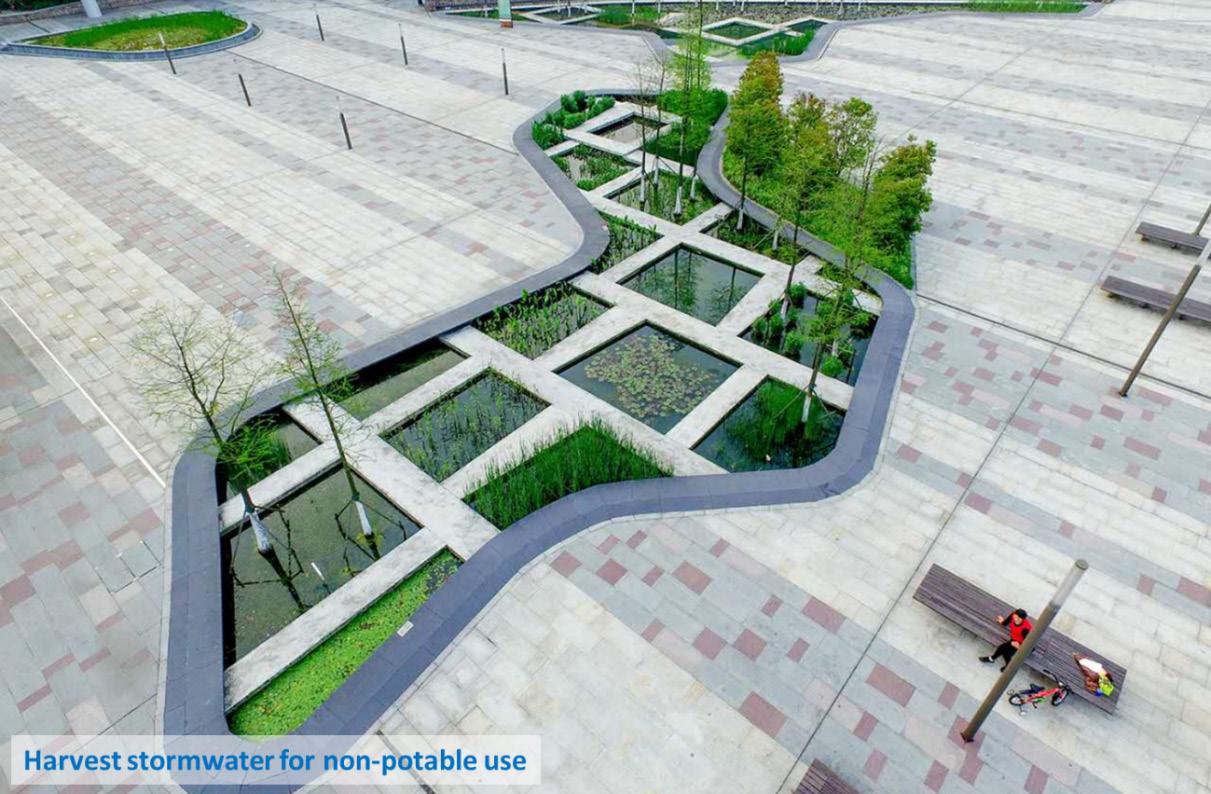
At the same time, there is a very strong value proposition to the utility, so voluntary action seems to make the most sense as a starting point”.
Biodiversity benefits TNC is inspired by the actions of the many utilities that are investing in their source watersheds, such as the city of New York voluntarily investing in the Catskills. “What happens in that catchment is of great importance, that we can connect those communities in a positive way.”
“TNC’s vision is of a world where both people and nature can thrive. “This is right in our sweet spot, if you will, trying to create a world where we see people and nature thrive. This, for us, feels like a good journey to be on. We believe there will be very significant benefits to biodiversity, carbon mitigation and rural development through the efforts of utilities and cities to invest in their source watersheds.” Projects can bring tangible, measurable value, Erickson notes, but monetised value is not the whole story.
Once it is established that such value exists, investments to improve water security and resources can be undertaken in ways that maximise biodiversity, for example. While this may not be monetised, it is possible to identify benefits to areas or systems and increases in integrity and long-term viability.
This is a message that a utility or a city can use – that, as well as better water security, their work is contributing to biodiversity gains or has a benefit to carbon mitigation.
“The water sector deserves to get the most investment possible to be able to deliver on its core mission of water for people,” she adds.
Of the core purpose of the report, she stresses: “We are very keen to continue to partner with the sector, to bring forward very good case study lessons learned, to seek out those who are interested in learning more, to come to IWA as the association that provides tools and skills. We are delighted to partner with IWA to bring forward what we know around nature-based solutions and to be helpful in that space that could benefit utilities worldwide.”
For more information on The Nature Conservancy, see www.nature.org/en-us/ For more information on IWA’s activity around nature-based solutions and working with TNC, see iwanetwork.org/projects/ nature-for-water-andsanitation/
Andrea Erickson

As the global lead for water security at The Nature Conservancy (TNC), Andrea Erickson heads the organisation’s activity to develop and promote the use of nature-based solutions, including applications that help water utilities address water quantity and quality issues





With your support we can continue to provide practical help, care and comfort.
Accommodation and home visits are just two of the ways we support New Zealanders affected by cancer.
Visit cancer.org.nz to find ways to make a difference by volunteering, donating or taking part in our events.
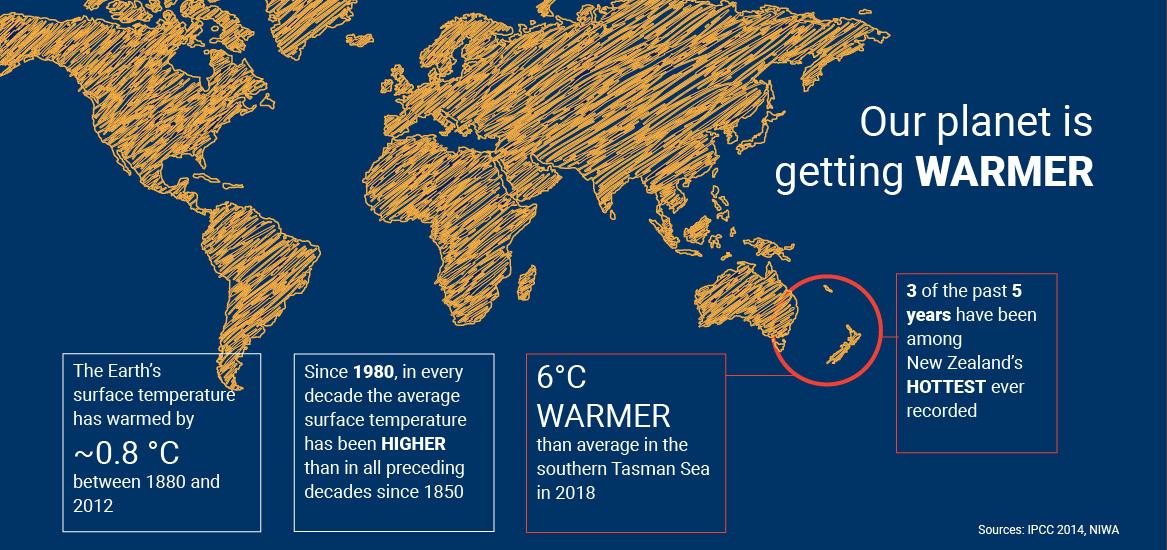
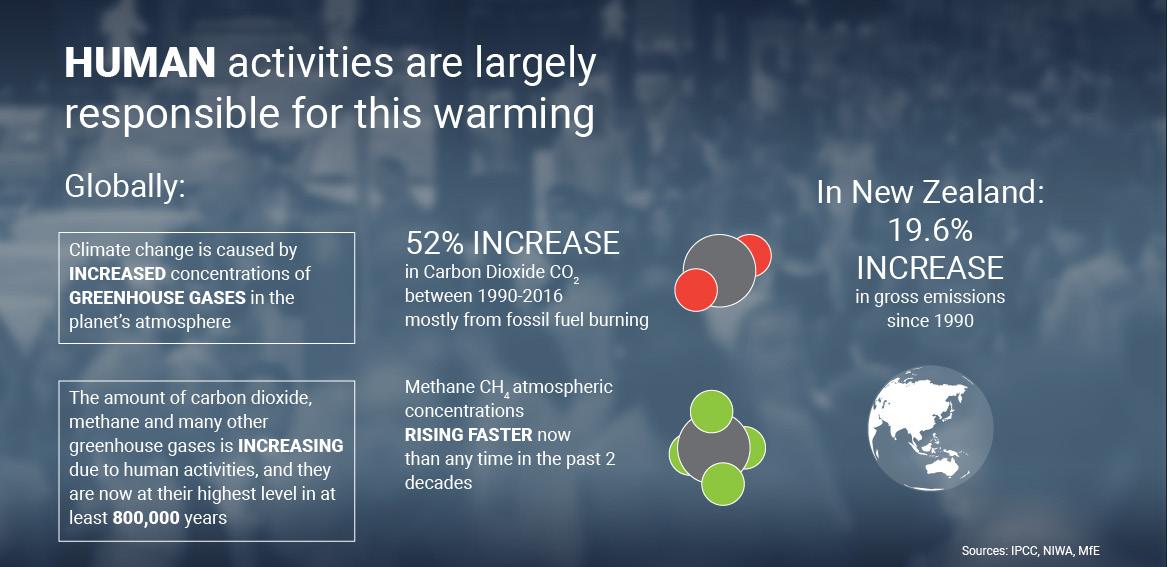
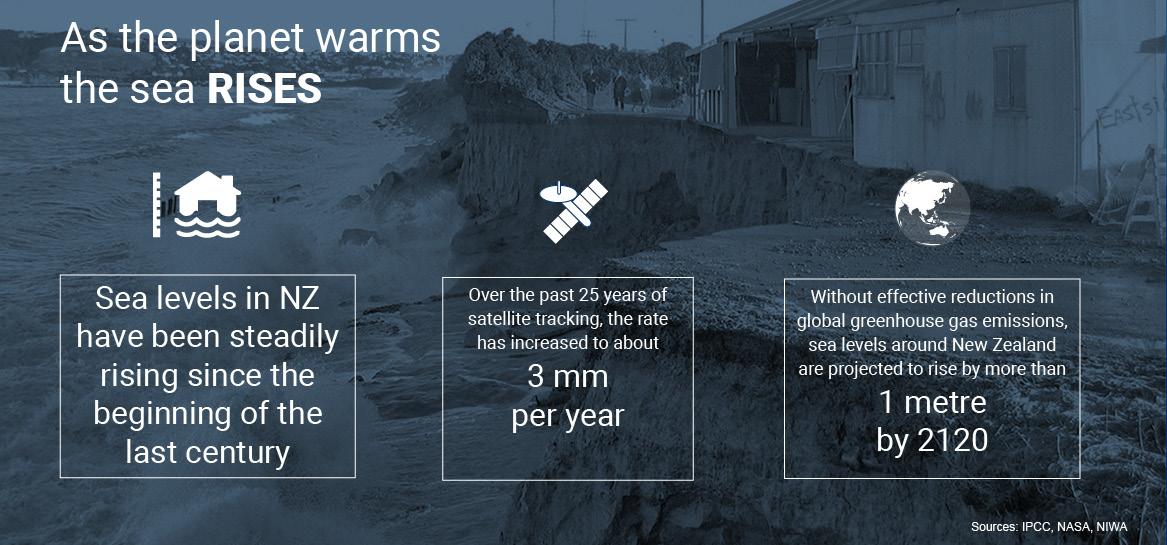


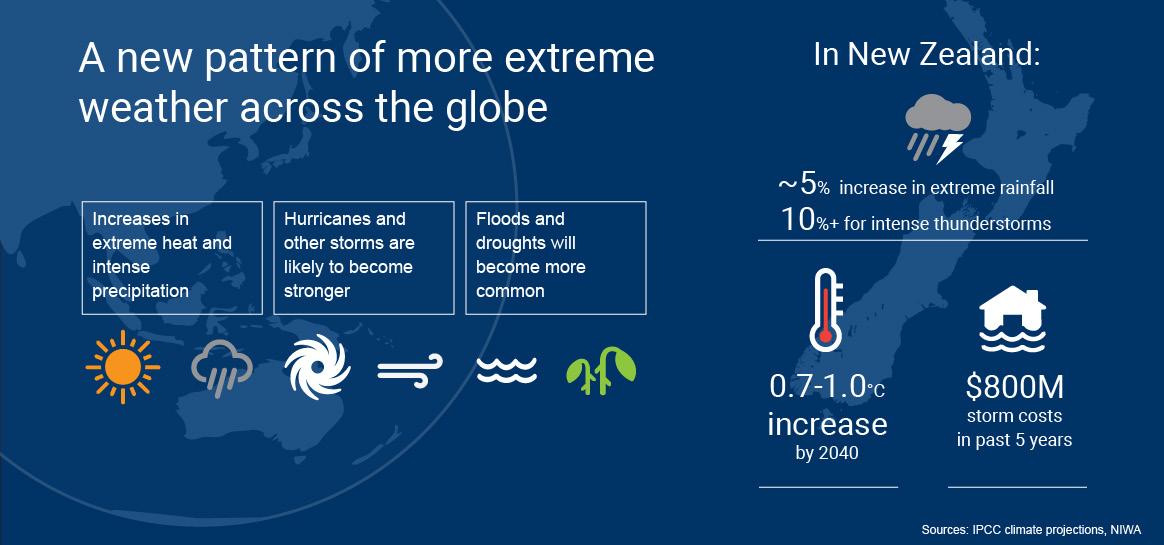
Yearbook 2020 Fixing the roads, looking after the workers
Rebuilding the rail and roading infrastructure after the Kaikōura earthquake has also meant focusing on the wellbeing of the thousands of workers involved
Assembling all the workers for the Kaikōura rebuild meant taking them away from their homes and families for weeks on end.
It could have been a recipe for trouble, but the North Canterbury Transport Infrastructure Recovery Alliance, or NCTIR, put systems to help the workers and to integrate them into the local community.
The Health and Safety Manager for the project, Stephen Bell, says looking after the wellbeing of the staff meant being flexible, and really caring about workers’ welfare.
It’s an approach that earned NCTIR a special judges’ mention from the recent Site Safe Awards and has some valuable lessons for other large projects.
The 7.8 quake in November 2016 dumped nearly a million cubic metres of rock on State Highway 1 and the Main North Line railway. As part of the rebuild, the NCTIR Alliance was created as a partnership between the NZ Transport Agency and KiwiRail, along with Downer, Fulton Hogan, HEB Construction and Higgins. Since then more than 8000 workers from 350 companies have worked on 180 sites.
It’s been hard work in a challenging environment, and Stephen Bell says a key
challenge was helping the hundreds of workers adapt to a life away from home.
The efforts gained NCTIR a judges’ special mention in the inaugural Kalmar Mental Health and Wellbeing Award at Site Safe’s annual awards .
The judges said NCTIR’s entry was a bit outside the usual scope of the awards but was so remarkable that they gave NCTIR the special nod. (The winner of the award was a three-way tie between Paul Lynch of FloorRight Installations, Switched On Group and Dave Burt of Team Cabling.) In their commendation the judges said what made NCTIR special was that it made wellbeing a company priority.
“It’s a topic for positive discussion from the top down, and the plan doesn’t stand still,” the judges said. “We believe that every business has something to learn from the lead that the NCTIR has taken.”
Bell says a key lesson learned was that NCTIR had to check up on how people were doing all the time and adjusting what support was needed. “From mid-2017, we led a hearts-and-minds campaign focused on the lifesaving rules to promote good workforce behaviour and ensure workforce wellbeing.” He says the whole NCTIR team was focused on reopening the intra-island transport networks and that gave them a high tolerance for work-related stress - but it did lead to mental fatigue and burnout for some.
“The initial programme promoted self-care and use of the ‘5 ways to Wellbeing’. “We also employed two local dedicated Wellbeing Officers to check in with workers.”
But the hard winter in 2018 threatened to knock the stuffing out of people. “We quickly found we had a tired, project-worn workforce. The wellbeing programme was revitalised, and mental health advocate Mike King was brought in to talk to all the workers.
“It was during this time that we first trained 12 staff as mental health first aiders using the CoLiberate programme.”
NCTIR also made it easier for workers to spend more time with their families by adjusting the work hours. “Most construction workers were there to earn better money than they could in their hometown, so working hard while they were there was important to them,” Bell says.
They also said if they were having a day off, they’d prefer it to be at home.
This led to a new Fatigue Management Guideline, and option of a new 10.5-day continuous work roster: Construction teams worked12 hours per day most days, but only 8 hours on Saturdays to allow for additional recreational time on the weekends that they stayed in Kaikōura. The new roster meant that on the alternate weekend they got 3.5 days at home, with travel as part of their last roster hours for the fortnight.
Knowing they had a good break, with some downtime while the kids were at school, and while services such as banks were open, hugely boosted morale, Bell says.
Key takeaways for contractors:
Having people embedded in the workforce who are there to monitor wellbeing gives managers eyes and ears on the ground.
“We created a dedicated wellbeing team and established two Wellbeing Officers. They joined breakfast at the accommodation Village at least weekly, were regularly out on site, and were always available by phone, connecting with and listening to people.”
They also took practical, immediate action where needed. When a worker’s brother suddenly passed away, a Wellbeing Officer drove him to Christchurch airport so he could get home quickly.
The result was the officers won the confidence of the workers, and people knew that practical, on-theground support was available if they had a problem, “As the project has changed from recovery to improvements and the number of workers has decreased, we’ve adjusted our model,” Bell says.
“We have one Wellbe
Rebuilding the road and rail links damaged by the 7.8 quake was a huge task
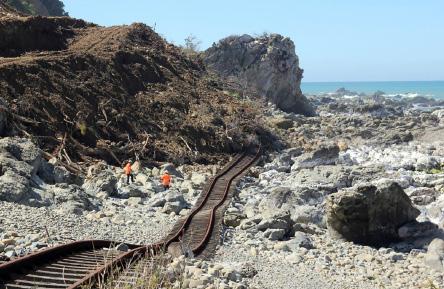
ing Officer, with 24 people across the project trained in mental health first aid, using the CoLiberate program. This includes construction managers, health and safety staff, human resources staff, and a range of people who regularly visit offices and sites.
“Engagement with this team continues to be positive, with each person having a conversation an estimated 20-30 times per month on average, so we know they are reaching people when help is needed.”
They then rolled out the secret weapon in the shape of Mike King again in winter 2019 with almost all the workforce turning out to hear him. NCTIR also gave out merino tops and beanies to keep workers warm. They have also given out
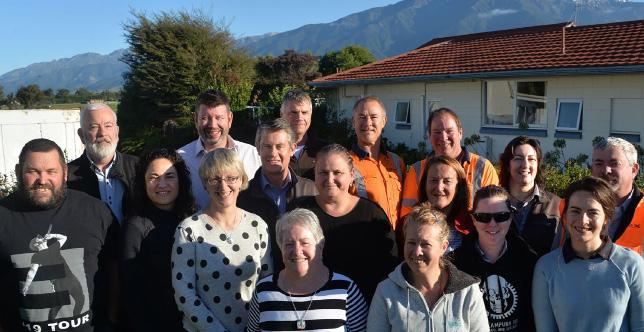
Trained mental health first aiders that supported the workers
fridge magnets for workers’ families so they had an emergency contact number if there was a family issue and the worker was not contactable.
All the efforts paid off with a workforce that feels valued, Bell says.
“And while we know our wellbeing programme is working, we also need to continue adapting it to meet the team’s needs.”
Celebrating 40 years of engineering and manufacturing innovation

+$422,000,000 Total buying power Average spend per visitor $75,000
4,500+ visitors
CEOs, General Managers & Business Owners, Design Engineers, Mechanical Engineers Electrical Engineers, Operations Managers, Fitters, Tuners & Toolmakers, Welders & Fabricators
OVER 60% SOLD
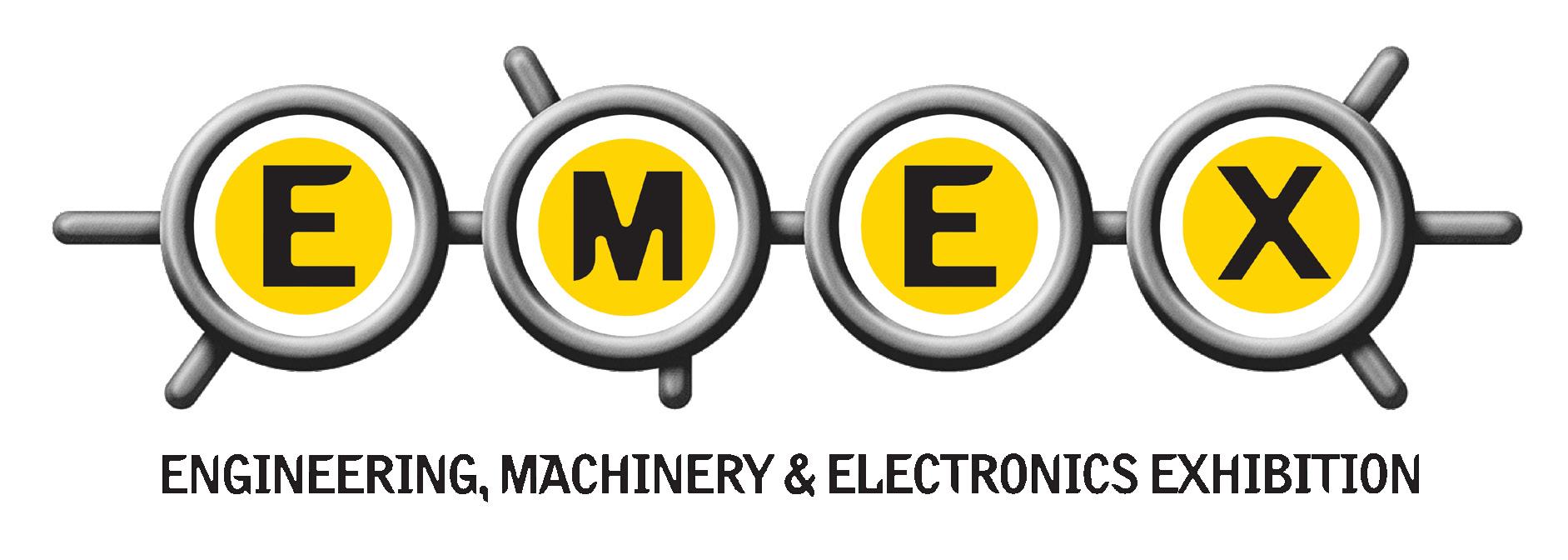
Exhibit at New Zealand’s largest manufacturing and engineering industry trade show

Don’t miss out. Contact us today
Aad van der Poel Exhibition Sales Manager aad@xpo.co.nz / 021 314 199
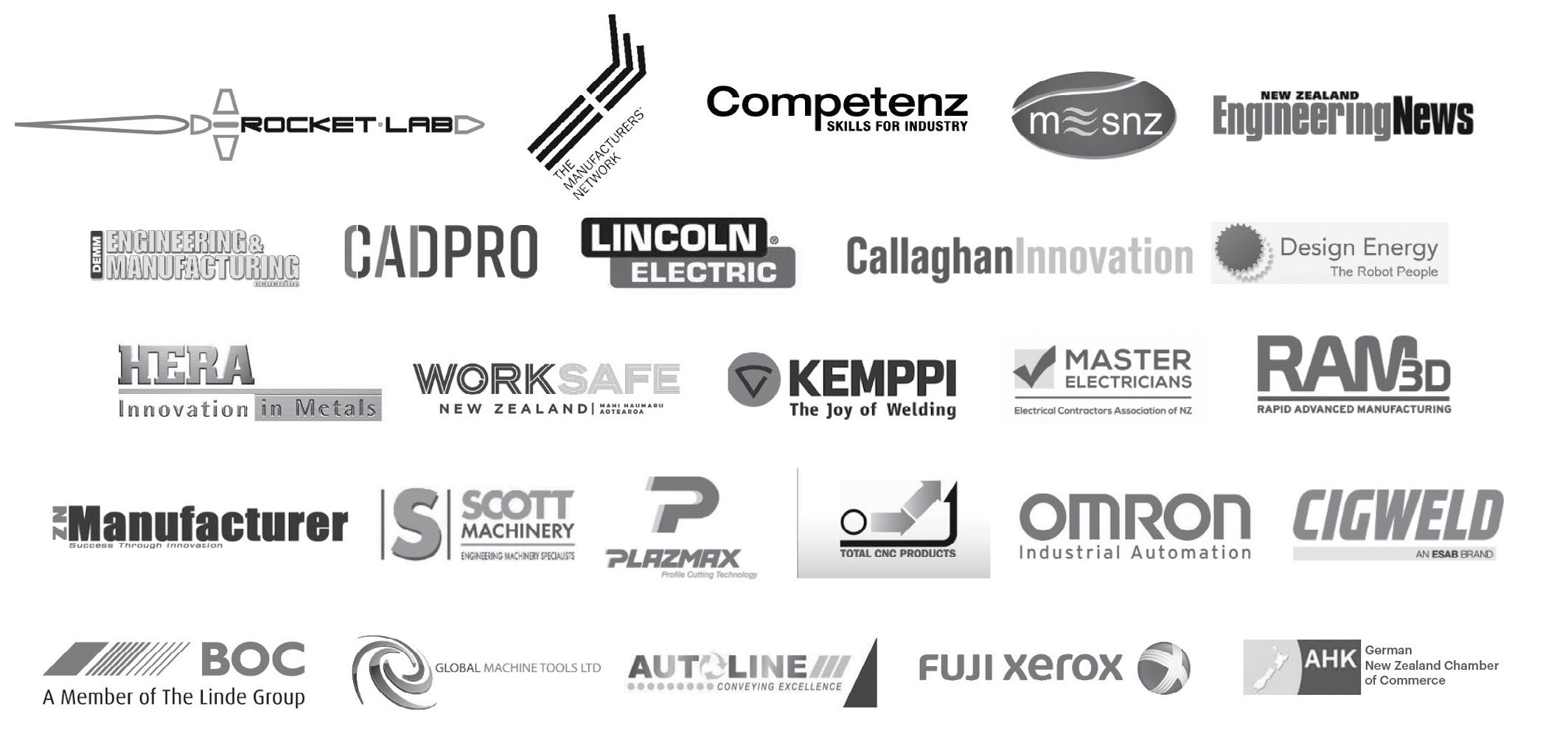
YEARS STRONG 100% NZ OWNED
$76,000 estimated average exhibitor sales post show
98% of visitors said that sourcing and procuring new products at the show was important to them
LIMITED SPACES BOOK NOW
22-23 July 2020


ASB Showgrounds, Auckland










